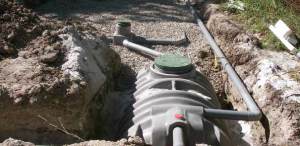Non-collective sanitation concerns around 13 million people in France and the number of installations is estimated at around 5 million. This method of purification in its own right refers to any sanitation system carrying out the collection, pre-treatment, treatment, infiltration or discharge of domestic wastewater from homes not connected to the public sanitation network.
Sewerage
Poor sewage disposal
The lack of ventilation
The foul odors are the mark of an insufficiency, or even a total absence of ventilation of the septic tank with all water.
Home page
They come from the accumulation of hydrogen sulphide (H2S), this gas with the characteristic smell of rotten egg, generated during the fermentation linked to the pretreatment of wastewater.
This lack of ventilation is also the cause of degradation of the concrete in the septic tanks.
The action of hydrogen sulphide results in an attack on the concrete by sulfuric acid: dissolution of cement compounds and formation of expanding minerals.
The EXATIS firm can assist you in your procedures concerning poor workmanship, non-conformities or any other problem affecting the proper functioning of sanitation.







